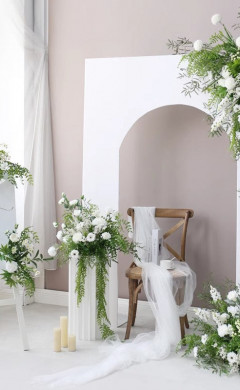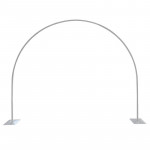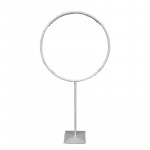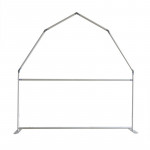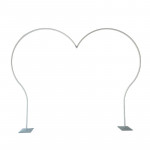How to schedule your wedding day: An Itinerary & Timeline for Success
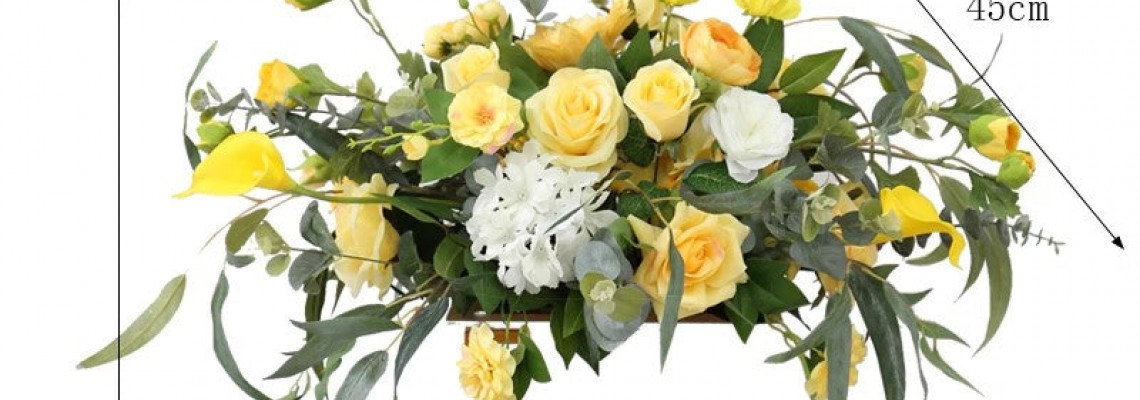
How to schedule your wedding day: An Itinerary & Timeline for Success
Your wedding day is packed with unforgettable moments, from your first glance to your last retreat. However, achieving wedding magic may need extensive preparation and coordination. Therefore, a well-defined wedding schedule could guarantee everything goes according to plan. You have to turn up and have fun!
However, how is your wedding day scheduled? Our purpose is to clarify that. Below, discover the average duration of a wedding, view an example of a wedding day schedule, and receive further preparation advice from actual couples. Prepare to plan a successful wedding day!
How long is a typical wedding from start to finish?
According to Wedding Wire, the average wedding lasts almost six hours from start to finish. To put it another way, your reception will end at about six o'clock if your wedding ceremony starts at noon. That does not, however, account for the time you will spend. Therefore, when creating your entire wedding day plan, don't forget to account for these.
- Getting ready and taking pictures before the wedding
- Participating in after-reception events, such as parties
- Putting up or taking down decorations
Therefore, when creating your entire wedding day plan, remember to account for these.
How long should a wedding ceremony be?
Despite being the "main event," your wedding ceremony is the shortest portion of the day. Depending on whatever extras you incorporate, such as a sand-pouring ritual for a beach wedding day, your ceremony may go longer or shorter than the average, about 30 minutes.
How long should a wedding cocktail hour be?
A wedding cocktail hour allows guests to mingle and interact after your ceremony. A cocktail hour usually lasts an hour, as the name implies. Nevertheless, you can make it longer or shorter based on your schedule. In fact, at a less formal wedding, some couples would forego a cocktail hour.
How long should a wedding reception be?
You can relax and enjoy with your loved ones at your reception. With designated periods for supper, dancing, cake-cutting, and other events, most wedding receptions run about four hours. Naturally, the length of time you reserve with your reception location will determine this.
What time of day should a wedding start?
Your daily goals and overall mood will determine the best time to begin your wedding ceremony. Would you rather have it in the evening or in the morning?
Here are some typical start times for morning, afternoon, and evening weddings.
Morning wedding
A ceremony held early in the morning might be ideal for enjoying the gentle morning light. Since you'll need plenty of time to get ready and probably don't want to start your day at 3 am, it's a good idea to set the earliest start time for a morning ceremony at 10 am.
Afternoon wedding
An afternoon wedding that begins at noon offers a convenient compromise between early and late start times. In addition to avoiding your reception running late into the night, you don't need to get up early. But, if you're holding your ceremony outside in a warmer region, remember that the afternoon is typically the hottest time.
Evening wedding
If you have an evening wedding, you can have a more relaxed build-up to your ceremony. Depending on the season, this is an excellent opportunity to capture the sunset in your pictures. An evening wedding ceremony should typically begin by 6 pm, allowing for a whole night of fun celebration. However, it would help if you also considered that visitors who have a lengthy drive home might find a late reception inconvenient. Therefore, some guests might have to depart early from your reception.
An example wedding day timeline template
We created this sample wedding itinerary for a ceremony that starts at noon based on the average times it usually takes to host all the essential wedding components.
Our wedding schedule assumes that your ceremony and reception will be held at the exact location; however, if they are held at different places, you must factor in travel time for both you and your guests. You may modify this timeline based on your preferred start timings to suit your needs. You can even change the sequence of some events if it makes more sense to you.
8:00 am: Wake up & Eat Breakfast
Your wedding day starts when you get out of bed and get ready. Feel free to have a quick breakfast with your family and your bridesmaids. We will keep you from telling anyone if you drink one or two mimosas.
Naturally, your significant other will begin their day and make their preparations at the same time.
9:00 am: Hair & Makeup
You'll likely want to get glitzy hair and makeup for your wedding photos. During your first meeting with a skilled hairstylist and makeup artist, estimate how long your desired appearance would take.
If you're doing your hair and makeup, try a few different looks at home and note how long it takes you to achieve your desired look. Just remember to factor in some additional time for conversation with your bridesmaids.
9:30 am: Finishing touches & detail shots
Most wedding photographers arrive half an hour before you and your spouse are fully prepared. Naturally, though, this is contingent upon your contract. They will have more time to take some amusing unscripted photos of you and your significant other getting ready. They might also use this time to take close-up pictures of your lovely bridal bouquet, rings, and wedding invites.
10:00 am: Individual Portraits
After that, you and your spouse will work with your wedding photographer for at least half an hour to take individual photographs.
You may also take a few brief group pictures with your bridesmaids. Since you'll be doing formal portraits together later, now is a fantastic chance to choose more informal or humorous photos. Making amusing faces for the camera might help you overcome your pre-ceremony nervousness!
11:00 am: First look & more pre-wedding portraits
Instead of waiting for the moment on the wedding aisle, some couples want to have their first glance. This is also an excellent time to snap a couple's photographs together as your photographer documents the moment. This way, you can divide your photo shoots into manageable daily segments.
11:30 am: Guest arrival
Your guests should begin arriving approximately 30 to 60 minutes before the commencement time listed on your wedding invitation. A DIY wedding sign might assist them in finding their way and feeling welcome.
Noon: Your Wedding Ceremony
Now that everyone has arrived at your location and is seated, it's time for your wedding ceremony to start! Please keep in mind that if you intend to walk down the aisle at exactly noon, ensure your guests are aware that they must come before the time specified on your invitation.
12:45 pm: Cocktail hour begins
Your guests can enjoy a cocktail hour while you take formal photos with your family and bridal party after you and your spouse have formally exchanged vows and left the ceremony area together. Aunts, uncles, cousins, and other significant wedding guests might come for a quick photo op with you.
This phase can be completed in less than an hour, particularly if you have previously taken pictures of the pair during your initial meeting. Thus, you can travel back to socialize and try some beverages!
1:45 pm: Your reception begins
Following cocktail hour, you can formally let your guests into your reception area so they can find a seat for dinner. Following the formal entrance of the bridal party, you and your spouse will make your first public appearance as a married couple.
2:00 pm: First course & Toast
A few special family members or friends may toast your new union. Be ready to blush, either out of appreciation or shame. Most wedding toasts typically cause both!
Toasts usually start after the first meal if you're hosting a formal dinner. However, toasts can begin once every visitor has finished their plate if you're hosting a buffet.
2:30 pm: Lunch
After that, it's time to relax and savour a delectable lunch at your beloved's table. This allows you to relax and enjoy your partner's company. Enjoy the moment and the cosy ambience, especially your exquisite decorations and floral arrangements.
3:00 pm: Cake cutting
Even while dinner may have filled you up, there's always space for dessert, mainly if it's your wedding cake. Your photographer will undoubtedly capture the moment you give each other your first bites!
Cutting and serving additional cake slices to your guests gives you and your partner a pleasant chance to talk to each of them and express gratitude for their attendance.
3:30 pm: Opening the dance floor
Now that everyone is seated and you are the centre of attention, it's time to enjoy your first dance. You may also decide to dance with your parents as a follow-up.
After completing your formal dances, you invite your guests to join the excitement by opening the dance floor. If you had previously closed the bar, consider reopening it to generate more of a dance club vibe.
5:30 pm: Bouquet toss
After a few hours of dancing and celebration, your wedding day is almost finished, but only after you pass your bouquet to the next prospective bride. Most brides choose a separate toss bouquet because they will likely want to keep their official bridal bouquet.
Because synthetic flowers require less care, we prefer using them in bouquets of all kinds. At no point during the day will you have to be concerned about harming the blooming or losing petals?
6:00 pm: Your grand exit
You arrived, you saw, and you gave it your all. It's time to ride out into the sunset with your loved one. Make sure your backup vehicle is ready to go!
This allows you enough time to go to the airport before it's too late if you're going on a honeymoon trip. Otherwise, you and your loved ones might go to an after-party. How you choose to end the day will determine everything!
More tips for scheduling your wedding day
To make the process go more smoothly, bear the following advice in mind as you begin creating your wedding calendar.
Print and hand out your itinerary.
Although using a digital planner or spreadsheet is an excellent way to arrange your ideas, printing a hard copy can also be beneficial.
All crucial participants in your ceremony and reception, such as the bridal party, photographer, caterer, and any other essential wedding providers, should receive a printed copy of your itinerary. Like performers receiving a screenplay, everyone will agree and be aware of their responsibilities in this way.
Multitask on your wedding itinerary.
If you need to save time on a lengthy day, try scheduling certain wedding-related activities to take place at the same time. A traditional example is organizing a cocktail party while you and your bridal party take wedding pictures.
Another inventive example is Emily and Allen, the couple from Flowersarch, who took pictures with their guests before departing the wedding ceremony location rather than setting aside additional time in their schedule for images with their extended family. At the end of the aisle, each group of guests took a picture with the bride and groom as they departed their seats. It's an excellent method for getting plenty of family pictures in a short amount of time.
Plan to run over
Dylan and Maria, a couple from Flowersarch, advise scheduling extra time than you anticipate using. For instance, instead of the 45 minutes you had planned, you might spend an hour and a half taking family pictures.
Because of this, it's a good idea to give each aspect at least ten to fifteen more minutes than you anticipate using. This will allow you to feel relaxed even if you are somewhat late.
Include arrival and start times on your invitation.
For ease, your wedding guests may sometimes attempt to trim things a little too close. For instance, they might arrange to attend at noon if your wedding invitation only states, "Friday at noon." Your schedule may be disrupted if your aunt and uncle are still settling in when you intend to go down the aisle.
Therefore, consider including suggested arrival times on your wedding invitation to help avoid any misunderstandings. For example, if the bridal procession is scheduled to begin at 5 pm, encourage guests to arrive by 4:30 pm.
Remember to savour the moment.
One final piece of advice. We are all aware of how complex wedding planning can be. However, if you're not careful, you could become so focused on getting there on time that you fail to appreciate the moment. Thus, keep in mind to breathe and slow down. Ultimately, today is yours!
Another thing to remember is that it's okay if things take longer than expected. There is no predetermined timetable for magic to occur. The most memorable wedding moments might even happen without any planning.
Conclusion: How to schedule a wedding day
As you create your itinerary, we hope this example wedding day timeline will serve as a helpful starting point. Flowersarch is here to help your wedding journey go smoothly if you require beautiful flowers that fit into your hectic planning procedure.
Our prefabricated artificial floral arrangements are customized for weddings with hectic schedules. When they arrive, they are ready to use: They don't require watering or refrigeration. They can be ordered beforehand, so you can use them whenever you like. If you use Flowersarch flowers, tag us on Instagram at @flowersarch so we can see your stunning photos!
